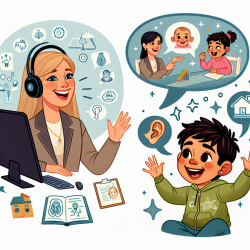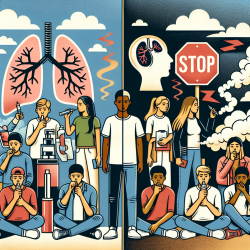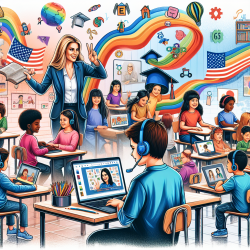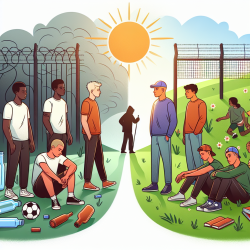Introduction
In the field of speech-language pathology, practitioners are continually seeking innovative approaches to enhance the educational and developmental outcomes of children. A fascinating study titled "Cultivating Native American Scientists: An Application of an Indigenous Model to an Undergraduate Research Experience" provides a unique perspective that can be applied to speech therapy practices. By integrating Indigenous pedagogical models, such as the Circle of Courage, into therapeutic settings, practitioners can create more inclusive and effective learning environments.
The Circle of Courage Model
The Circle of Courage is a model rooted in Indigenous spiritual values and educational practices. It emphasizes four core needs: belonging, mastery, independence, and generosity. These needs are essential for healthy developmental growth and can be seamlessly integrated into speech therapy practices to foster a supportive and empowering environment for children.
Belonging
Creating a sense of belonging is crucial in any educational or therapeutic setting. In speech therapy, this can be achieved by building strong relational bonds between the therapist and the child, as well as among peers. Activities that promote social interaction and group cohesion can enhance the child's sense of belonging, leading to improved engagement and motivation.
Mastery
Mastery involves developing competence and achieving success in specific skills. In speech therapy, this can be facilitated through structured activities that allow children to practice and refine their communication skills. Providing opportunities for children to demonstrate their progress and celebrate their achievements can boost their confidence and encourage further learning.
Independence
Fostering independence in children is a key goal in speech therapy. By encouraging self-directed learning and decision-making, therapists can empower children to take ownership of their communication skills. This can be achieved through personalized therapy plans that cater to each child's unique needs and goals.
Generosity
Generosity, or the act of giving and sharing, can be incorporated into speech therapy by encouraging children to support and help their peers. This not only enhances social skills but also promotes a sense of community and empathy. Activities that involve collaborative problem-solving and peer feedback can cultivate a spirit of generosity among children.
Conclusion
The integration of the Circle of Courage model into speech therapy practices offers a promising approach to enhancing the developmental outcomes of children. By addressing the core needs of belonging, mastery, independence, and generosity, therapists can create a nurturing and empowering environment that supports children's communication growth. Practitioners are encouraged to explore further research and consider implementing these Indigenous pedagogical models in their practice.
To read the original research paper, please follow this link: Cultivating Native American scientists: an application of an Indigenous model to an undergraduate research experience.










